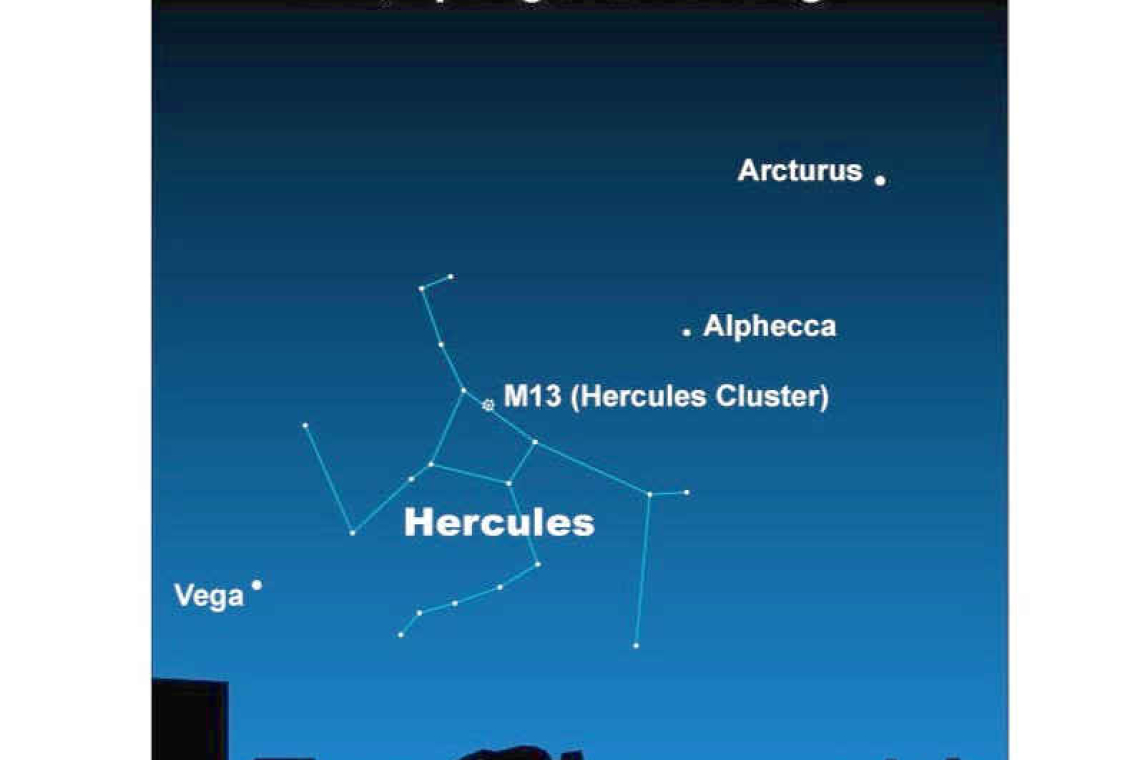~ St. Maarten’s Backyard Astronomy for May 30 - June 1 ~
Sun rises at 5:35am
Sun sets at 6:44 pm
Lunar phase: 1st quarter, waxing crescent
Moon rises at 10:00am, Saturday
Moon sets at 11:20pm, Saturday
This weekend, the moon is a thin crescent and sets fairly early, so we have a good chance to see the fainter stars and constellations. Let’s find two crowns in the sky – one in the north, the Corona Borealis, and one in the south, the Corona Australis. The two crowns have a similar size and shape, both are somewhat small, and both resemble the shape of the letter “C”.
The more northern crown sits high in the eastern sky after sunset. It’s thought to dominate the summer season’s night, especially for viewers in the northern latitudes of Europe and North America. The constellation Corona Borealis is also located more or less along a line between two bright stars. The first is Arcturus in the constellation Boötes the Herdsman and the second is Vega in the constellation Lyra the Harp.
The more southern crown rises late, about 10:00pm, in the south-south-eastern sky. It never rises high above the southern horizon if you are viewing from the latitude of St. Maarten. The Corona Australis sits just below the teapot shape of the constellation Sagittarius and just to the left of the curled tail of the constellation Scorpius.
Lately, the planet Mars has been found high in the western evening sky after sunset. This weekend, the crescent moon is framing Mars, so chances are very good you can find it with little effort. The red planet currently holds the honour of being the only planet in the evening sky, but you can catch Venus Saturn and Mercury in the east before sunrise. Jupiter is traveling behind the sun, relative to our vantage point in the solar system.
Thank you for keeping up with the Night Sky articles, backyard (or beach) astronomy designed for St. Maarten sky viewing. FYI: If you are out later on in the week, note that each star rises about four minutes earlier each day than written here, and the moon rises 50 minutes later. Night Sky is researched and compiled by Lisa Davis-Burnett. Earthsky.org is a key resource for information and images. Questions or comments? Email This email address is being protected from spambots. You need JavaScript enabled to view it.







